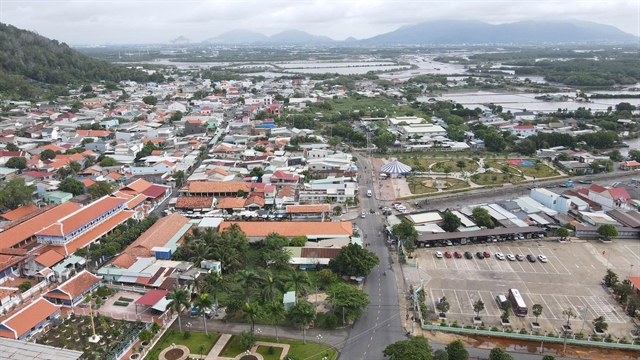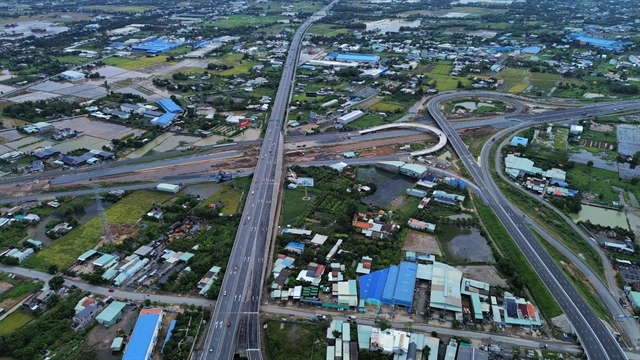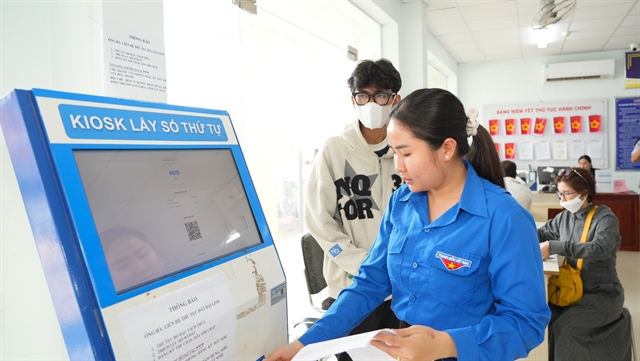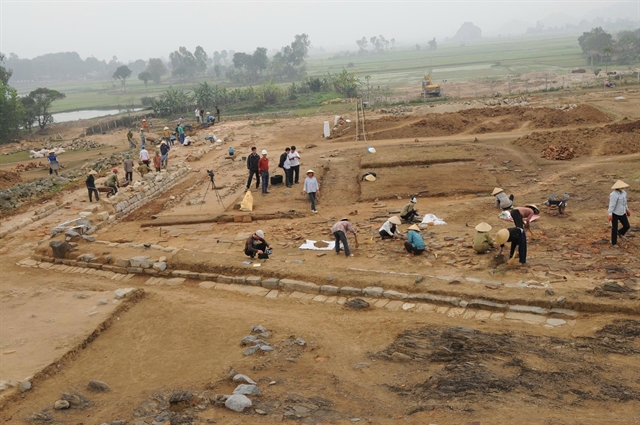 Economy
Economy

 |
| The interchange connecting HCM City’s Ring Road 3 with the Bến Lức – Long Thành and HCM City – Trung Lương expressways is being built. The road’s seven-kilometre section passing through Tây Ninh Province is expected to be completed in 2026. VNA/VNS Photo Bùi Giang |
Tây Ninh Province aims for rapid, dynamic and sustainable development in 2025–30, seeking to join the list of the country's top 10 provinces and cities in terms of economic scale and growth.
It is targeting average GRDP growth of 10–10.5 per cent a year during the period and per capita income of US$8,000–8,500, an urbanisation rate of above 50 per cent, and the reduction of poverty under new criteria by 2030.
In 2021–25 it grew by 6.73 per cent annually. In the first nine months of 2025 growth was 9.52 per cent, the highest among southern provinces.
By the end of this year the economy is expected to reach VNĐ352 trillion (US$13.36 billion), the 10th largest in the country, with per capita income of $4,770.
Over the last five years, tourism has emerged as a new economic pillar, driven by Bà Đen Mountain’s transformation into an international-level destination.
Social welfare has also improved, with old houses rebuilt, tuition fees waived, and a poverty rate among the country’s lowest.
Following the merger of Long An Province into Tây Ninh on July 1, the expanded province now spans 8,536 sq.km.
“The merger of the two provinces has created new strength and opportunities, expanding development space," said Nguyễn Văn Quyết, secretary of the provincial Communist Party Committee.
“Tây Ninh not only connects the southeastern region with HCM City and Đồng Nai Province but also serves as a gateway linking the Mekong Delta with Cambodia and ASEAN. This is a major advantage for developing industry, hi-tech agriculture, tourism, logistics, and import-export.”
Industry-led orientation
The province has more than 37,000 operating businesses and has attracted over $24 billion in FDI.
It has 46 industrial parks and 50 clusters, with more than 1,000ha of land ready for investors.
According to Nguyễn Văn Út, chairman of its People’s Committee (the provincial government body), the province remains firmly committed to an industry-led orientation.
By 2030 it plans to have 59 industrial parks and 82 clusters covering 21,300ha, focusing on large-scale, high-tech and green projects.
With nearly 600,000ha of farmland, Tây Ninh also aims to become one of southern Việt Nam’s leading high-tech agricultural centres.
The province is accelerating administrative reform and building a transparent, investor-friendly environment.
Yet it still faces infrastructure and digital challenges, calling for stronger IT capacity and faster digital transformation.
To meet the 2025–30 targets Tây Ninh has identified three key priorities: reforming administration and developing high-quality human resources; advancing science, technology, innovation, and green transformation; and mobilising resources for major infrastructure.
It also prioritises tourism development and strategic sectors such as high-tech agriculture, supporting industries, and logistics – all vital to creating jobs, raising incomes and attracting investment.
 |
| A view of Bà Đen Mountain, known as the “roof of the southern region” in Tây Ninh. The province’s tourism continues to strengthen its appeal with a mix of natural, spiritual and historical attractions. VNA/VNS Photo Giang Phương |
Building connections
In 2025–30 the province will invest VNĐ35 trillion ($1.3 billion) in transport infrastructure, focusing on links with HCM City and neighbouring provinces, and between its two merged localities.
“The province plans several major roads with at least eight to 10 lanes. Only when it is well connected can Tây Ninh truly become the region’s trade hub,” Chairman Út said.
Resources are being prioritised to complete strategic routes, expressways and ring roads, ensuring seamless connectivity from industrial zones to seaports.
It will also make efficient use of Long An International Port, a 70,000 DWT facility, to expand logistics and maritime trade.
Tây Ninh views quality human resources as the “golden key” to achieving industrialisation and modernisation, especially after the administrative merger and adoption of a two-tier government model.
With a population of nearly 3.3 million, it aims by 2030 for 80 per cent of its workforce to be trained, with 35 per cent holding degrees or certificates.
However, challenges remain, including a labour-market mismatch and uneven staff quality, particularly at the commune level.
The province is prioritising training young and female officials, improving digital and foreign-language skills.
It has launched a “State-institutes-enterprises” partnership model to align training with real market needs, offering internships, job opportunities and industry-linked education.
Alongside administrative streamlining, Tây Ninh seeks to improve its business climate and boost ranking in governance, competitiveness, and citizen satisfaction indexes.
Út said the province would roll out policies to attract investment in high-tech industries, agriculture and smart urban development.
 |
| A Youth Union member assists a resident with land procedures at the Long Hoa Ward People’s Committee in Tây Ninh. The province is improving the efficiency of its two-tier government model to better serve citizens. VNA/VNS Photo Minh Phú |
Pushing digital frontiers
Huỳnh Thị Hồng Nhung, director of the provincial Department of Science and Technology, said: “With strong direction from provincial leaders and active participation of all sectors and levels, Tây Ninh has built a relatively firm foundation for digital government, economy and society.”
All administrative agencies now use digital management systems and online public services.
Fibre-optic Internet covers 99 per cent of households, while 5G infrastructure is available in nearly half of all rural communes and urban wards, and in 50 per cent of industrial zones and clusters.
The “Tây Ninh Smart” platform and hotline 1022 allow two-way communication between citizens and the government. Around 93 per cent of social welfare beneficiaries now receive payments through bank accounts.
Implementing the Politburo’s Resolution 57 (December 2024) on science-technology development, Tây Ninh targets by 2030 to have its digital economy account for 30 per cent of GRDP, ranking among Việt Nam's top 10 provinces in digital transformation.
It plans to allocate at least 3 per cent of its annual budget to science, technology and digital transformation.
The province also emphasises green growth, promoting clean agriculture, renewable energy and effective waste management — ensuring that progress remains both digital and sustainable. VNS




